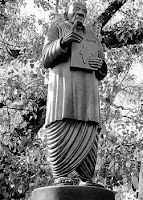Introduction
Have you heard of Poomully Mana? If not, it is one of the well-known Namboodiri families in the state of Kerala. In Malayalam language, Mana means the family house of a Namboodiri or Kerala Brahmin. The house is located in a place called Urakam in the Peruvanam village in Thrissur district of central Kerala. According to the information available on Kerala history, this family has a lineage of over 900 years. This family has found mention in the Aithihyamala, a collection of centuries-old stories from Kerala.
Family Tree
The Poomully family had built the original Ammathiruvadi Temple in Thrissur district. As the years past, the family handed over the ancestral wealth of the temple to the presiding Goddess and its reign to the Cochin royalty. Later, the family moved to a place called Peringode in the present-day Palakkad to concentrate on the work it is famous for even today. The members of this illustrious family are famous exponents of Ayurveda, music, kalaripayattu and other cultural and art forms prevalent in Kerala. Some of the better-known members of the Poomully Mana are listed below.
- Late Sri Poomully Narayanan Namboodirippad: He is often referred to as the father of Aaramthampuran. He himself was a famous Rig Veda practitioner.
- Late Sri Poomully Raman Namboodirippad: He was an exceptionally talented Carnatic musician who practiced under the tutelage of famous Chembai Vaidyanatha Bhagavatar.
- Late Sri Poomully Neelakandan Namboothirippad: He was the most famous and inimitable Ayurveda practitioner. In fact, the illustrious family is eternally indebted to this man for its name in the field of Ayurveda treatment. Apart from this, this talent had developed the expertise in Veda, Kavyam, Tarkam, Meemamsa, Vedanta, Kalaripayattu, Visha Chikilsa, Yoga Shastra, Hasthy Ayurveda, toxicology, Natyashastra and many performing arts. Hence, he is referred to as the “Arivinte Thampuran”. In Malayalam, it means the legend of knowledge. In fact, he had received the acknowledgment for his expertise in Meemamsa from none other than Jagad Guru Sree Sankaracharya of Sringeri Mutt.
Family Expertise in Ayurveda
No doubt, Poomully Neelakantan Namboodirippad is regarded as the "Aaramthampuran" and "Arivinte Thampuran". Due to his untiring efforts, the Ayurveda treatment way became more popular across the country and globe. He successfully developed a novel treatment method based on principles of Ayurveda. He coined it as 'Kutipraveshika treatment'. This is a rare Rasayana treatment procedure to be recorded in the last century. The first of these attempts took place at Poomully Mana some years back. In 1953, Poomully Vasudevan Namboodirippad had undergone this novel treatment under the supervision of Poomully Aramthampuran and Vaidyamadham Valiya Narayanan Namboodiri. Even today, the descendants of his lineage practice the Ayurveda way of treatment successfully.
Treatment Facilities
In Malayalam, the Kuti is nothing but a padippura or a building. The facility that was used for developing Kutipraveshika treatment is still retained as the treatment center by the younger generations of this illustrious family. Currently, it is used for preserving ancient manuscripts and accommodating the consultation blocks of practicing doctors. Other parts of the Poomully Mana are used for both outpatient and inpatient consultations and treatments. The senior physicians accommodate the junior doctors to work under them. This enables the junior doctors (BAMS) to enhance their practical knowledge in the Ayurvedic way of treatments, medicine preparations, dietetics, and hospitality.Today, Poomully Mana has grown into an Ayurveda hospital where common men as well as several renowned personalities from within and outside the country visit seeking Ayurveda treatments from renowned physicians.

















































